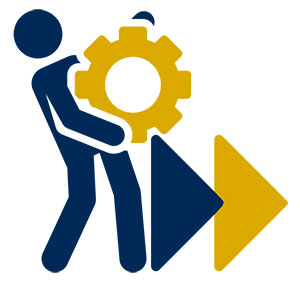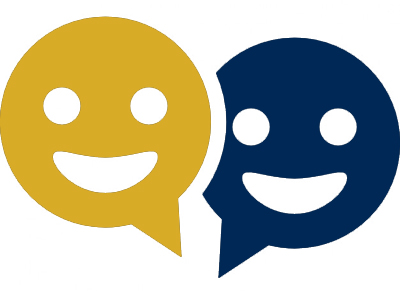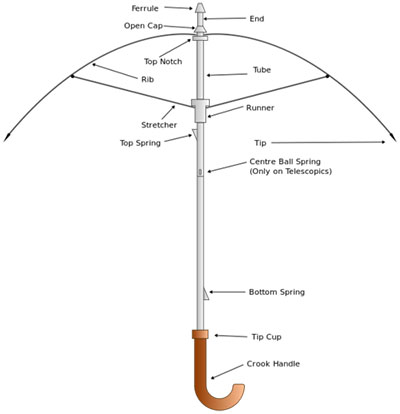What did we learn about ourselves working from home during the pandemic? How can we support each other and communicate compassionately in the weeks to come as we transition to on-site schedules? For this week’s post in the Working Forward series, I invited Talent Development Manager Kevin Reyes to drop by and answer some questions. Join us as Kevin applies his infectious enthusiasm to a discussion about the effectiveness of empathy, the power of a pause … and the best type of pizza.
What did we learn about ourselves in the pandemic that will benefit us going forward?
It’s funny that we start with this question because self-reflection is one of the hardest things for most of us, but it’s important as we shift from visions of pre-pandemic normalcy to post-pandemic, newly emergent normal. Looking within ourselves allows us to take a beat and realize the impact of the innovations implemented in the last 15+ months.
 Workforce and organizational experts anticipated a shift in how we work by 2025-30 – a more globally distributed workforce, increased automation, fewer site-dependent sectors of employment, and more remote workers. Sounds familiar, right? We’ve seen that regardless of our role or title, or the letters behind our name, we are in the same soup and have had to respond to a dynamic environment rife with change. While this up and down is taxing – it’s hard to stand on a ship pitching in a stormy sea – we still have delivered, provided services, identified successful strategies and made continuous improvements. This often was done not by demanding perfection but by looking for the MVP – Minimally Viable Product – and enhancing it through small tests-of-change to create new systems, supports and structures for our working world.
Workforce and organizational experts anticipated a shift in how we work by 2025-30 – a more globally distributed workforce, increased automation, fewer site-dependent sectors of employment, and more remote workers. Sounds familiar, right? We’ve seen that regardless of our role or title, or the letters behind our name, we are in the same soup and have had to respond to a dynamic environment rife with change. While this up and down is taxing – it’s hard to stand on a ship pitching in a stormy sea – we still have delivered, provided services, identified successful strategies and made continuous improvements. This often was done not by demanding perfection but by looking for the MVP – Minimally Viable Product – and enhancing it through small tests-of-change to create new systems, supports and structures for our working world.
This has taken so many forms that we sometimes forget everything we have learned. Whether it’s how to support people disproportionately affected by virtual meetings, such as working women and mothers, or the need for candid and open communication from leaders who must have the courage to state their ideals and goals so the workforce can process changing expectations. Even if we don’t like the message, we can find understanding and learn to live with these expectations or make the difficult adult choice of finding another environment where we are more comfortable. Perhaps it’s realizing that to be the most impactful individual we must act and lead with empathy, regardless of whether there is lead, supervisor, VC or chancellor in our title. You can lead from wherever you are in the organization.
Finally, it’s critical that we become more comfortable with being wrong, failing forward, or simply saying, “I don’t know, but we’ll find out together.” We may not get it perfect, but we can do great things when we work together. There’s a fantastic African proverb that says, “If you want to go fast, go alone. If you want to go far, go together.” And like I said earlier – Todos somos en la misma sopa del dia. Forward. Together.
What’s the most important thing a supervisor can do right now for their team?
Ask. Listen. Ask. Listen. PAUSE. ASK. REALLY LISTEN. The biggest advice I can give is to be curious and not judgmental. We can do ourselves and our community a great service by taking a moment to:
- Open ourselves to listening, learning and leading with empathy
- Pause before saying a word
- Assume positive intent
- Ask with the goal of understanding
- Listen actively, then confirm
- Pause again
- When you need more clarity, ask
- Restate, rephrase and reaffirm that you understand
- Make sure you ask one more thing, and this is important: “What can I do to help you be successful, to remove hurdles from your path, to help relieve the tension/stress/fear that is impacting your ability or success?”
Ask. Listen. Ask. Listen. See the pattern?
Why is celebrating little victories so important for a department or team?
 Let me geek out and channel Yoda for a minute: celebration, recognition and appreciation … a worker needs ALL these things. Let’s start by remembering that while they seem similar and sometimes we wield them as if they are, each is a distinct approach and land differently with each of us.
Let me geek out and channel Yoda for a minute: celebration, recognition and appreciation … a worker needs ALL these things. Let’s start by remembering that while they seem similar and sometimes we wield them as if they are, each is a distinct approach and land differently with each of us.
Celebrating is important to mark the completion of milestones, key steps in a process or, as we’re doing now, any change initiative. Change is inherently difficult for many people, but it’s critical to take a moment to look back, realize the sum of your accomplishments, celebrate the achievement and use all that good feeling to power you up the grade. Every step forward is progress, so make sure you reward yourselves for what you’ve done. And yes, do it often!
Recognition is a part of that. We appreciate things like service awards, merit increases and annual reviews that tell us how well we’re doing. But recognition doesn’t always feed directly into our motivation center, our engagement motor, our bucket of goodwill and good feeling.
And if you notice, I said “we appreciate” those actions or symbols of success, but appreciation is the most impactful method of fueling someone’s engagement and commitment to the campus and community. We all like to be appreciated for what we do. The hard part is finding the appropriate means of appreciation. It should land in the recipient’s preferred pathway. There’s nothing more de-motivating than publicly appreciating someone who is mortified by having attention drawn to them, especially if they would have preferred you join them for coffee and tell them privately how much you celebrate their work.
What do you tell a supervisor or employee struggling to break through a communication barrier?
 How much time do we have? The first thing I would do is ask the person struggling to take a long and holistic look at their communication. This means being self-reflective (even if it is uncomfortable), because the biggest tip I can give is to assume the problem is not with the other party, regardless of whether the communication is linear, interactional or transactional. Start with yourself. Self-reflect and ask curious and open-ended questions:
How much time do we have? The first thing I would do is ask the person struggling to take a long and holistic look at their communication. This means being self-reflective (even if it is uncomfortable), because the biggest tip I can give is to assume the problem is not with the other party, regardless of whether the communication is linear, interactional or transactional. Start with yourself. Self-reflect and ask curious and open-ended questions:
- What issue am I having in this communication breakdown? Is it an issue with my clarity, lack of understanding, not getting the expected data/answer/info/facial expression or even a high five in recognition?
- What is my role in the confusion?
- Is it my message or my language? Do we not have a shared vocabulary?
- Was my communication as clear as it could be? Was that clever turn of phase actually confusing?
- Did I provide not enough context or too much subtext? Did I use the wrong tone?
- Did I choose the correct method for the communication?
- Take your time. Avoid fly-bys – you know, the good ol’ “hey let me drop this important topic here and zoom off like a recently declassified UFO.” This can lead to confusion instead of clarity, and leave more questions than answers.
- Text, email, Teams, Slack or other e-communications lack visual cues that convey tone and subtext. Misunderstandings can occur because we’re left to fill in the gaps, often incorrectly.
There’s no quick fix. It took time to build the barrier; it takes time to remove it – moat by moat, brick by brick, girder by girder. But you can get there. Start with yourself. Once you’ve reflected, try seeing the message from the other perspective and re-engage.
Are you excited about returning to on-site work? Are you anxious? Why?
Yes. And yes. Because those two feelings aren’t that far apart. In most instances excitement, fear and anxiety are closely aligned. And as Simon Sinek is fond of saying, it only takes a small change in your narrative to impact the way we look at things.
Nervousness about a job interview or presenting to over 600 people could be immobilizing, but it can also be motivating if you focus on the excitement. So while I have concerns – as I’m sure everyone does – about myriad unknowns, I’m also excited about the opportunities and possibilities. I’m looking forward to learning how I can help our Bobcat community navigate this change. Like we did with the emergence of COVID-19, we can learn to live with or even flourish personally and professionally in this environment. The UC system and our UC Merced community have worked together to make this possible. There’s still much to learn from, grow with, and achieve in the coming months. But like I said, it’s exciting!
How can a supervisor effectively combine broad communication with smaller (one-on-one) efforts?
I’ll probably sound repetitive, but it’s a strategic redundancy, not repetition by happenstance. We really need to be more curious and less judgmental. Spend more time asking clarifying questions than dictating. Sometimes directive communications are needed, and we have to give incremental or piecemeal information and instruction. If we embed key communications in our guidance and information, we’ll go a long way to understanding.
 Let me state this more clearly, because what I’ve just done is show how to blend a broad communication with specific one-on-one notes. Each of us should ask clarifying questions as we communicate. This is to ensure understanding, for sure, but more importantly asking ensures we aren’t wasting energy with a muddy message.
Let me state this more clearly, because what I’ve just done is show how to blend a broad communication with specific one-on-one notes. Each of us should ask clarifying questions as we communicate. This is to ensure understanding, for sure, but more importantly asking ensures we aren’t wasting energy with a muddy message.
Think of communication as an umbrella. The broad message is your canopy held together by the ferrule (the cap), which is your goal, mission or vision. As you move down the umbrella all parts have a role in keeping us dry. Without expanded ribs and straight stretchers, the canopy isn’t going to open, so make sure the one-on-one efforts lift and complete the message. Most importantly, the tube and crook handle need to be solid and easily grasped. If we have clear, relevant data and common or shared understanding/language, not only is the umbrella going to keep us dry, but it also won’t turn inside out in a soft breeze or a strong wind. Now you know why I like those magical umbrellas that open both ways!
What resources from Talent Development do you recommend we read or watch?
Oh, wow! That’s like asking a parent which child they like best (nope … not gonna do it) or asking which pizza is better, a New York slice or Neapolitan? To be honest, it depends upon the day and your appetite. But hey, let’s not talk about pizza, it makes me hungry.
Take a look at the information and tools for professional development, then reflect on what you want. Ask yourself how you feel in your campus role. Are there areas in which you want to grow or learn? Are there things you’d like to remove from your plate? These are all important questions, because as Karl Weick shared from his study of woodland firefighters, sometimes you have to drop your heavy packs to better move forward.
In a pinch, you can take a look at our LinkedIn Learning resources as a toe in the development pool. Then, if what you find excites, refines or motivates your development desires, explore the courses and programs we have to offer. We will be launching our second Peak Pioneers cohort in the fall and also piloting a few new programs: an engagement series, one for new new leaders as well as one for those considering leadership. There’s a lot coming and we’re excited. To go back the pizza thing, we’re going to have lots of pie choices in the near future - Neapolitan, Detroit, Sicilian, etc.
What’s your personal soundtrack to Working Forward?
Blue Oyster Cult’s “(Don’t Fear) The Reaper.” Too much? No, there can never be too much cowbell! In all seriousness, I’ll have to go back to one of my youthful favorites – yes, I’m dating myself here – and say Oingo Boingo has been heavy on my pandemic playlist and I’m currently rocking Danny and the boys singing “Just Another Day.” Similarly, the Raconteurs’ “Somedays (I Don’t Feel Like Trying)” is another hot hit.




